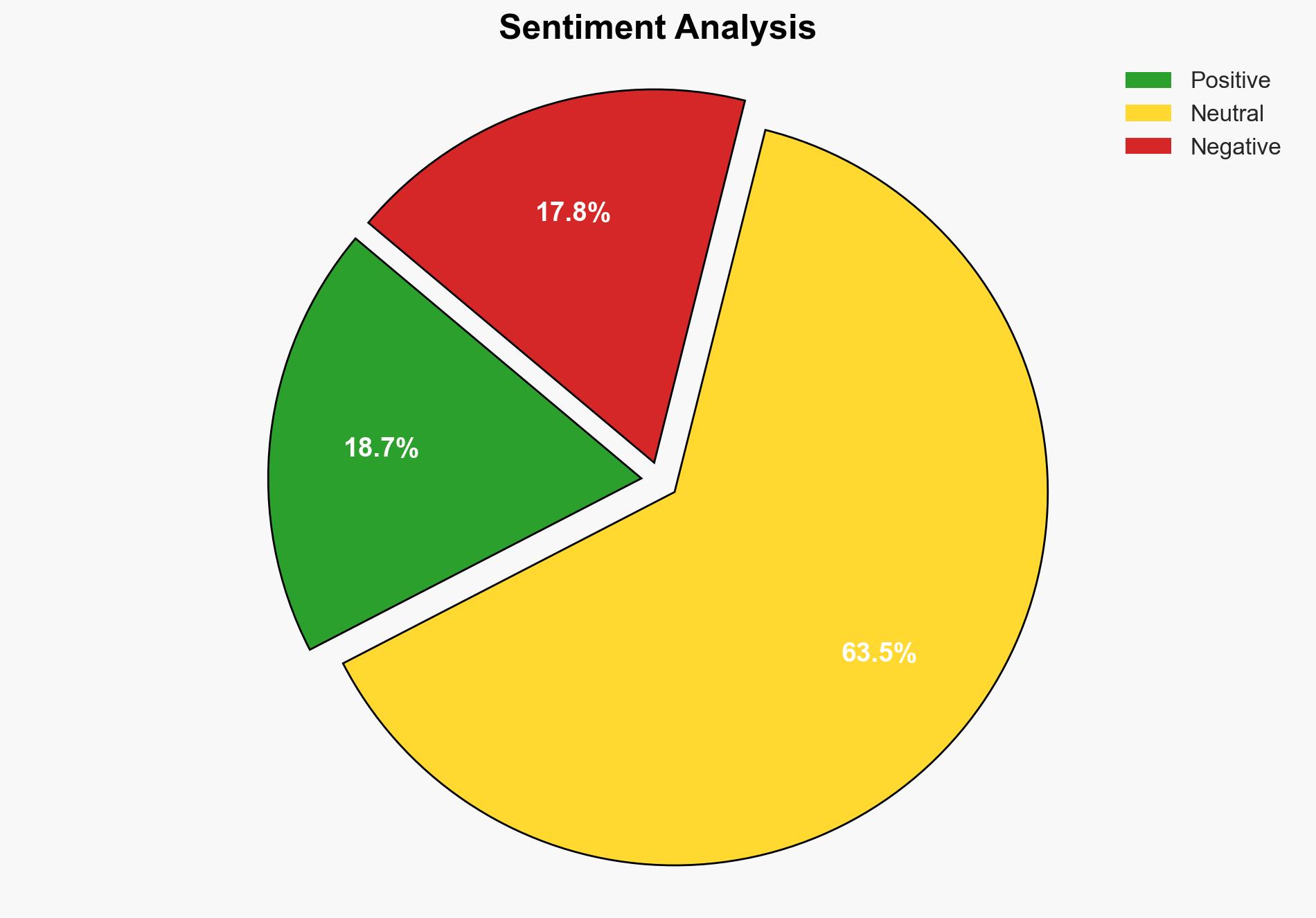Lack of equipment stalls race to save earthquake survivors in Myanmar – Al Jazeera English
Published on: 2025-03-29
Intelligence Report: Lack of equipment stalls race to save earthquake survivors in Myanmar – Al Jazeera English
1. BLUF (Bottom Line Up Front)
The response to a powerful earthquake in Myanmar is critically hampered by a lack of equipment and resources, significantly affecting rescue operations in Mandalay and surrounding areas. The earthquake has resulted in widespread devastation, with numerous buildings collapsed and infrastructure severely damaged. Immediate action is required to enhance rescue efforts, address logistical challenges, and provide necessary aid to affected populations.
2. Detailed Analysis
The following structured analytic techniques have been applied for this analysis:
General Analysis
The earthquake in Myanmar has caused extensive destruction, particularly in Mandalay, the country’s second-largest city. Rescue operations are severely constrained due to inadequate equipment and resources. Survivors, including those trapped under debris, are in urgent need of assistance. Communication issues further complicate coordination efforts. The military and local rescue teams are overwhelmed, with private businesses stepping in to provide machinery. The situation is exacerbated by overcrowded medical facilities, forcing victims to seek alternative care.
3. Implications and Strategic Risks
The earthquake poses significant risks to regional stability and economic interests. The immediate humanitarian crisis could lead to increased mortality if rescue operations are not expedited. The destruction of infrastructure may disrupt economic activities, particularly in Mandalay and surrounding areas. Additionally, the lack of effective communication and coordination could hinder recovery efforts and lead to long-term socio-economic challenges. The potential for aftershocks remains a concern, posing further risks to already weakened structures.
4. Recommendations and Outlook
Recommendations:
- Deploy international aid and specialized rescue teams to enhance local efforts and provide necessary equipment.
- Establish a centralized communication hub to improve coordination among rescue teams and government agencies.
- Implement emergency response training and drills to better prepare for future disasters.
Outlook:
In the best-case scenario, international aid and improved coordination lead to a successful rescue operation, minimizing casualties and facilitating recovery. In the worst-case scenario, delays in response and inadequate resources result in a higher death toll and prolonged recovery efforts. The most likely outcome involves a gradual improvement in rescue operations with international support, although challenges in infrastructure rebuilding and economic recovery persist.
5. Key Individuals and Entities
The report mentions significant individuals such as Sandar Win, whose son was injured in the earthquake, and Wai Phyo, a rescue worker highlighting the challenges faced. Additionally, Atikom Watkoson is involved in rescue operations in Bangkok. These individuals are central to understanding the human impact and operational challenges of the disaster response.





